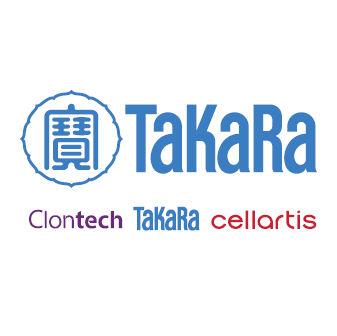iDimerize Inducible Homodimer System
iDimerize Inducible Homodimer System
The iDimerize Inducible Homodimer System lets you control the homodimerization of a protein of interest in live cells via a membrane permeant compound. The system includes the iDimerize Inducible Homodimer Vector Set 1, which contains two mammalian expression vectors encoding fusion tags that can be easily added to your protein of interest. The activity and localization of the resulting chimeric protein can be controlled by the addition of a small molecule to the cell medium. The system also includes the membrane-permeant compound, B/B Homodimerizer, required for homodimerization, and two linear selection markers for hygromycin and puromycin resistance.
The iDimerize Inducible Homodimer System (with Tet-On 3G) lets you control the expression level and dimerization of a protein of interest in live cells. The system includes the iDimerize Inducible Homodimer Vector Set 2, which contains a mammalian expression vector (pTRE3G-Hom1) that allows doxycycline-dependent expression of your protein of interest, tagged with the DmrB domain, in Tet-On 3G transactivator-expressing cells. Homodimerization of the resulting DmrB-tagged protein is controlled by the addition of the B/B Homoodimerizer.
The iDimerize Inducible Homodimer System (with Tet-On 3G) includes vectors and linear selection markers, our highly efficient transfection reagent, Xfect, Tet System Approved FBS, and the B/B Homodimerizer.
Overview
- Previously available from ARIAD as the ARGENT Regulated Homodimerization Kit
- Rapid chemical induction of cell signaling pathways
- Activate any pathway or cellular event controlled by homo-oligomers (e.g., dimers, trimers, or tetramers)
- Established tool used by over 2,000 research groups, with over 400 scientific publications to date
- B/B Homodimerizer is identical to the AP20187 ligand
- B/B Washout Ligand reverses protein oligomers that were induced by the B/B Homodimerizer
- Plasmid and lentiviral (Lenti-X) vector formats are available
Applications
- Induce any event or pathway that is controlled or activated by protein-protein interactions
- Activate signaling pathways in real time
- Study transmembrane receptors
- Recruit signaling proteins to specific subcellular locations (e.g., the plasma membrane)
- Inducible homodimer technology has been used for functional studies of:
- Receptor and non-receptor tyrosine kinases
- Receptor and non-receptor serine/threonine kinases
- Non-kinase receptors
- Signaling proteases
- Adaptor proteins
- Cell adhesion and rolling
- DNA looping
- Activation of recombinase
- RNA splicing
- Protein splicing
- Glycosylation
How does iDimerize technology work?

How does iDimerize technology work? A chemical inducer of dimerization, or “dimerizer”, is a cell-permeant organic small molecule with two separate motifs that each bind with high affinity to a specific protein module (Dmr domain) fused onto the protein(s) of interest. Addition of the dimerizer brings the chimeric protein subunits into very close proximity to each other, mimicking the activation of the cellular event that dimerization of interest controls. B/B Homodimerizer induces self-association of two copies of the same protein whereas A/C Heterodimerizer induces association of two different proteins. Conversely, a reverse dimerizer ligand (D/D Solubilizer) will bind to and dissociate a protein that aggregates in its absence.
Activation of a signal transduction pathway through dimerization of a cell surface receptor protein

Activation of a signal transduction pathway through dimerization of a cell surface receptor protein. Cell surface receptor proteins fused to the DmrB domain do not interact until the B/B Homodimerizer is added. This cell-permeant ligand induces the fusion proteins to interact, activating a downstream event.
Signal transduction example 2

Signal transduction example 2. Inducible mouse model for prostate cancer. iDimerize Inducible Homodimer technology was used to characterize the role of different FGF receptor subtypes (FGFR1 and FGFR2) in prostate cancer. Transgenic mice (which express conditionally active alleles of FGFR1 or FGFR2 in prostate tissue) were treated with B/B Homodimerizer and monitored for prostate cancer. FGFR1, but not FGFR2, was found to play a role in prostate cancer development [Freeman, K. W., et al. (2003) Cancer Res. 63(23):8256–8563].
Signal transduction example 1: Inducing a Programmed Cell Death Pathway (Inducible Apoptosis)

Signal transduction example 1: Inducing a Programmed Cell Death Pathway (Inducible Apoptosis). The Fas receptor (FasR) is a transmembrane protein located on the surface of cells that activates programmed cell death (apoptosis) when induced to trimerize by fas ligand (FasL) molecules located on the surface of adjacent cells (e.g., cytotoxic T cells). FasR-FasL binding plays an important role in the regulation of the immune system and cancer progression. This trimerization (and the resulting apoptotic signaling cascade) can be mimicked using the iDimerize Inducible Homodimer System: cells expressing a FasR-DmrB fusion protein can induce cell death on demand, simply by adding the B/B Homodimerizer. An in vivo model [the MaFIA mouse; Burnett, S. H. et al. (2004) J. Leukoc. Biol. 75(4):612–623] utilizes the Fas receptor to systematically and reversibly eliminate macrophages from transgenic mice.
Exploiting fas-mediated apoptosis to induce programmed cell death

Exploiting fas-mediated apoptosis to induce programmed cell death. Fas-mediated apoptosis is triggered by trimerization of the fas receptor (FasR) via its interaction with the fas ligand (FasL) on an adjacent cell (left). This FasR trimerization event activates the caspase 8 pathway. In the MaFIA mouse model, the fas death domain is fused to two repeats of a dimerization domain and expressed from a myeloid-specific promoter. Apoptosis of macrophage cells in this mouse is induced by treatment with B/B Homodimerizer (AP20187) (right).
Burnett, S. H. et al. Conditional macrophage ablation in transgenic mice expressing a Fas-based suicide gene. J. Leukoc. Biol. 75, 612–623 (2004).
Freeman, K. W. et al. Inducible prostate intraepithelial neoplasia with reversible hyperplasia in conditional FGFR1-expressing mice. Cancer Res. 63, 8256–63 (2003).


